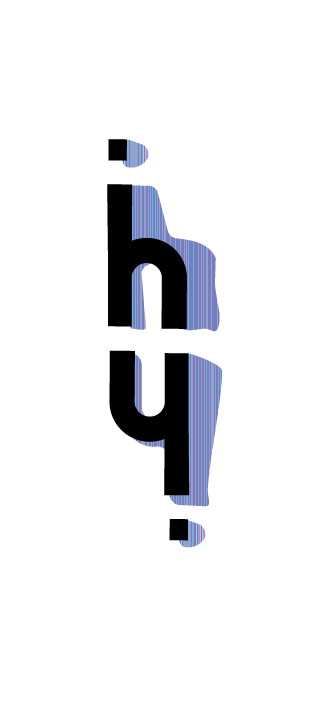Gold ADDY
Award Winner
Award Winner


Memory Maker
Product Design for Mobile App
Duration: 15 Weeks
Project Type: IOS Mobile App, Healthcare, Group Project
Duration: 15 Weeks
Project Type: IOS Mobile App, Healthcare, Group Project
A Solution for all Aspects Around
Alzheimer's Disease
Mobile Application for Alzheimer Patients and their Caretakers
Through this new app, Alzheimer patients in the early stages and caretakers of Alzheimer patients in all stages will be better equipped, to find a way to help strengthen their memory while preserving their past in anticipation of a future in which those memories might no longer be accessible. Our solution is MemoryMaker. As a result of thorough research, we found ways to strengthen memory by cognitive exercises made for Alzheimer patients. Memories will be preserved with reminiscence therapy from collecting photos and retelling the patient’s lives through the app. Caretakers will be supported through a resource center that includes assistance in relief from caretaking, physical aid, transportation, daily tips and reminders to keep track of daily living and emotional support by centered forums. This was a group project with Sarah Kouch.
Responsibility: UX/UI Designer, Art Director, & UX Researcher
Alzheimer's Disease
Mobile Application for Alzheimer Patients and their Caretakers
Through this new app, Alzheimer patients in the early stages and caretakers of Alzheimer patients in all stages will be better equipped, to find a way to help strengthen their memory while preserving their past in anticipation of a future in which those memories might no longer be accessible. Our solution is MemoryMaker. As a result of thorough research, we found ways to strengthen memory by cognitive exercises made for Alzheimer patients. Memories will be preserved with reminiscence therapy from collecting photos and retelling the patient’s lives through the app. Caretakers will be supported through a resource center that includes assistance in relief from caretaking, physical aid, transportation, daily tips and reminders to keep track of daily living and emotional support by centered forums. This was a group project with Sarah Kouch.
Responsibility: UX/UI Designer, Art Director, & UX Researcher
overview
This was a semester-long project where we had to provide research, art direction, provide UI design as well as a working prototype. In
the span of 3 months, a working prototype based on research was created, and a brand was established for the MemoryMaker Application.
the span of 3 months, a working prototype based on research was created, and a brand was established for the MemoryMaker Application.
process

Concept Development

Research

Ideation

Final Solution
What combination of products and services will help strengthen Alzheimer patient’s memory, preserve memories, and help caretakers?
problem statement
define and research: interview and survey


caretaker
Per the Alzheimer Association, these are the best ways to support a caretaker.
Per the Alzheimer Association, these are the best ways to support a caretaker.
person diagnosed with Alzheimer's
Per the Alzheimer Association, these are the best ways to support someone diagnosed with Alzheimer's .
Per the Alzheimer Association, these are the best ways to support someone diagnosed with Alzheimer's .

user interviews
An empathy map was created to synthesize patterns of insights that uncovered the individuals implicit needs. The insights below were the most apparent.
“There wasn't much technology involved with them at all because they're elderly and
they don't really understand technology and like with Alzheimer's and dementia "they don't really "[understand where they are]”
they don't really understand technology and like with Alzheimer's and dementia "they don't really "[understand where they are]”
“it's very important to have someone that will come on a regular basis to relieve you so
that you can make your plans”
that you can make your plans”
importance of caretaking support
relationship with technology
memory frustrations
“with Alzheimer's patients as they get super angry a lot- they'll get frustrated if they don't
know what they're doing or if they're trying to do something so I tried to just speak with
them calmly, or remind them of things that they like- food was a good deterrent ”
know what they're doing or if they're trying to do something so I tried to just speak with
them calmly, or remind them of things that they like- food was a good deterrent ”
- Talking Tom
- Spotify
- Youtube
- GPS tracker
current tools used
resources limited
- National Alzheimer Association Website; does not feel connected to Alzheimer community
who
- Mainly family members were caretakers
- If not, facility workers
&
survey
survey
who
- Mainly family members were caretakers
- If not, facility workers
resources limited
- National Alzheimer Association Website; but does not feel connected to Alzheimer community
current tools used
- Talking Tom
- Spotify
- Youtube
- GPS tracker
&
survey
survey
competitive analysis
Understanding challenges the patient and their caretaker may face, a competitive analysis was made in order to provide strategic insights into features, functions, flows, and feelings evoked by design solutions of competitors . See the chart here
Sally Parker
28 years, Full-time Freelancer
- Goals, Spread awareness and support for the Alzheimer community. Cross-functional design between healthcare and technology for the public. Increasing awareness for those who cannot speak up for themselves on social.
- Frustrations, Lack of support for Alzheimer patients’. Does not agree with the healthcare system in America for the elderly. Lack of organization and accessibility for volunteering in the Alzheimer community.
The Helper
Lynda Stone
64 Years, Retired Real Estate Agent
- Goals, Adjust to this new life adjustment and to get through each day with gratitude and grace. Wants family to have the easiest transition and access to resources so they do not have to worry so much about her.
- Frustrations, Can’t help but be cynical because of mental confusion with who is family and who isn’t. Simple forgetfulness.
Newly Diagnosed Alzheimer Patient
Zach Johnson
38 Years, Former Software Engineer
- Goals, Find out the best way to support his mom with Alzheimers. Be updated with the latest technology and support for Alzheimer patients. Organize a structure for a better plan of care for his mom.
- Frustrations, Difficult to find an affordable full-time caregiver he can trust or respite care. Doesn’t feel support from the local Alzheimer community, Current Tech Tools are not for Alzheimers or across different platforms. Overwhelmed.
The Caretaker
users defined
The application should be simple, have clear navigation, and large easy buttons. Looking at current tools for Alzheimer patients were designed with accessibility in mind and had less buttons than more complex applications do.
There needs to be a focus on caretaking support where they can have access to resources
Structure and consistent activity for someone with Alzheimers is important. One of them being reminiscence therapy for effective well-being.
There needs to be a focus on caretaking support where they can have access to resources
Structure and consistent activity for someone with Alzheimers is important. One of them being reminiscence therapy for effective well-being.
the discovery
Provide an all in one experience in supporting an Alzheimer patient. There will be three user modes, the patient, caretaker, and helper. This way we can streamline the connection between the three, monitor the Alzheimer patient’s progress, and create communication with the Alzheimer's community for the caretaker.
solution approach: 3 different modes
3
2
1
Helper
Caretaker
Patient
a centralized communication platform between caretaker and helper for additional help
resources, planner, and monitoring patient tabs
scrapbooking tab, simple to do tasks, favorite activities
concept development
user journey
It was crucial to understand the happy trail path a user would encounter when using the memory maker application. Because we had different types of user modes ( patient, caretaker, and helper ) , having a specified user journey for each one would guide the the information architecture of the product and the UX road map. If this would be handed to development we can prioritize goals for every sprint.
problem space 2: Caretaker needs access to resources and organization.
The caretaker mode will be used by caretakers to manage the patients’ needs, access to resources and to schedule helpers. Patient needs include coginitive progress, medication, and mental health checks.
problem space 3: There was no resource to connect helpers and caretakers.
The helper mode will be used by people who periodically help caretakers with patient care. The app will help with finding caretakers, getting scheduled, and payment if they caretakers are able to pay the helpers.
problem space 1: Patient wants to remember their life and identity
The patient mode will be used by patients to help improve memory through coginitive exercises, reminiscence therapy by the ‘mylife tab’.
Where can I address problem spaces within the designs?
opportunity spaces
wireframes

Accumulating all research , inspiration from other applications solutions for cognitive patients, and focusing on the user’s perspective , low-fidelity wireframes were created. An extensive and expansive amount of frames were designed since we had the approach of different user modes. In other words, we had to create three different homepages and that had different focuses yet centered around the person diagnosed with Early Alzheimers. In addition , different scenarios of wireframes that highlight the features for patient, caretaker, and helper mode.
branding and design system
Now it’s time to dive into the UI portion and create high-fidelity wireframes. As art director and a past caretaker, I understood that creating a simple and welcoming design would be important. Research and survey showed that patients and caretakers would be older and not as technology inept, In addition caretakers are in a position of burnt-out overwhelmed with responsibility. The focus of the memory maker brand was to be fun , light, and breathable.
styles

final solution
Alzheimer-focused Care and Delivery
Memory will be maintained through cognitive exercises, reminiscence therapy by the my life tab and access to their favorite music. The caretaker would be monitoring and guiding the loved one when handling the device.
A Wholistic Approach to Caretaker's Needs
Caretakers will manage the patients’
needs, have access to resources, and
schedule helpers.
Patient needs include:
needs, have access to resources, and
schedule helpers.
Patient needs include:
- checking cognitive progress
- medication management
- mental health checks
Volunteering made easy
People who periodically help caretakers with patient care. They will use the app to:
- be found by caretakers
- communicate with them and get scheduled
- get paid if they did not choose to volunteer.
reflection
passion for UX design
My favorite part was coming up with solutions based on a specific users needs through research.
if i had more time.....
I would focus on the user interaction part for the different modes and how to adjust depending on the user mode.
let's work
together
together


